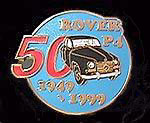|
For obvious reasons, most preserved or restored Rover P4 cars today are found in the U.K., where the P4 Drivers’ League (see “Rover Links” page) was founded over 20 years ago. Today the League has several hundred members, and it sponsors several events throughout the year. It’s a grand sight at these events to see so many fine old cars gathered together, virtually all of them in immaculate condition. The picture here was taken on the League’s 1996 “Heartbeat Tour”, and shows John Gorham’s “60” at a location that will be familiar to all devotees of the “Heartbeat” TV series. 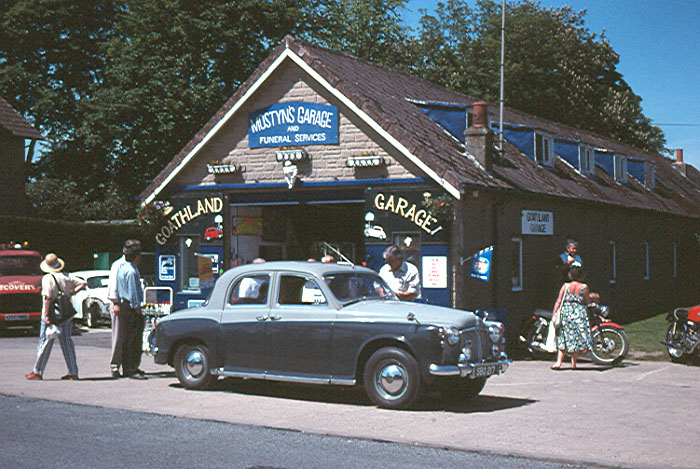 Considering the relatively small number of P4 cars produced, it’s
perhaps remarkable that so many can still be found in the lands and
dominions beyond the seas, where conditions can be hostile and spares hard to obtain. In Canada and the northern states of
the U.S.A., the salt used for de-icing the roads in winter is the
great enemy. Even a P4’s robust chassis and aluminium bodywork
aren’t proof against constant attack by salty slush for four or five months of the year unless suitable
precautions are taken. As a result, many North American P4s ended
their useful lives long before their basic mechanical components
were worn out. Here is a 1957 “105R” as seen in 1996 in a breaker’s yard in Ontario, Canada. This was the P4 model that had Rover’s ingenious, if somewhat inefficient, fully automatic transmission. When first seen in 1995, this car could still have been restored. A year after this picture was taken, there wasn’t much left. A sad sight. 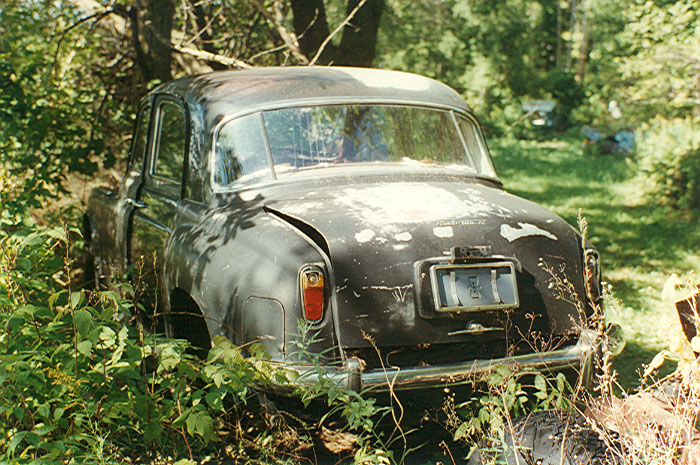
 In a field near Grimsby, Ontario, this 1961 “100” is being rolled over to allow the removal of its
gearbox and overdrive. As can be seen, many other parts have
already been removed for preservation and re-use. To end this page on a personal note, here is my own P4, a 1959 “90”, photographed in 2006 at Gravenhurst on Lake Muskoka. 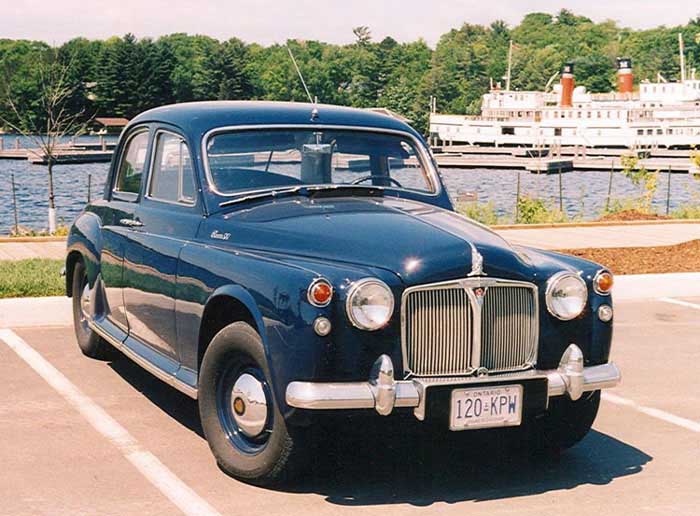
I bought this car in 1965 for $800, which seemed rather a large sum to me at the time. But I was already hooked on Rovers, as I had owned a 1953 "75" before this. The "90" had been a doctor's car -- in the UK, Rover P4s, with their outstanding reliability and image of solid respectability, were much favoured by members of the medical profession. When I bought it, the “90” had 56,000 miles on the clock. For ten years, the 90 served faultlessly as my daily transport, until in the winter of 1975 an encounter at speed with a series of potholes resulted in a broken rear spring main leaf and a shattered windscreen. At that time, I had neither the time nor the facilities to repair the damage, but as I couldn't bear to part with the car, I parked it in an obliging aunt's garage, where it slumbered for the next 13 years.In 1988, with a repaired spring and new windscreen, the Rover was back on the road. Today, it is in constant use from April to November -- the salt-free months in Ontario, and I generally take it on a motoring holiday every summer. Still in its original form apart from the addition of a Laycock-deNormanville overdrive (which allows the car to cruise comfortably at 70 m.p.h) and radial tyres, the Rover continues to provide that special blend of silent, comfortable, and reliable travel that has always been a P4 hallmark. Over the winter of 2005/2006, I carried out a fairly comprehensive restoration, with new sills welded in, all the minor dents fixed, a new rear bumper, other chrome bits re-plated, a completely re-done interior (to factory standard, by Diamond Trim of Aurora, Ontario), and new paint in the late P4 Rover colour "Light Navy". The valves were re-ground and a new water pump and front suspension bushes fitted. By 2015, I decided the time had come to overhaul the engine, which by then had covered about
169,000 miles. The (original) bearings were still good, the valves had been replaced twice and
were in good shape, but there was a lot -- quite a lot -- of wear in the cylinder bores and oil
consumption was becoming an issue. Through the good offices of a friend, I was able to obtain a fully re-manufactured Rover 100 engine. While putting a 100 engine in the 90 would be losing a bit of originality, there was no question in my mind that
this was the right way to go. Not only could I foresee several problems in trying to get the
original engine rebuilt, but the 100 engine offered a number of design advantages that would
make the 90 more suitable for modern driving conditions -- shorter stroke, roller tappets, seven
main bearings, etc. Besides, there were already a number of 100 parts in the car, so departing
from a strict originality was not really a concern. The 100 engine slotted right in with no
particular problems, and as of September 2017 has about 5500 miles on it. While it is rather difficult to make valid comparisons between the 100 engine and the original, since one is also comparing a "new" engine with one that was badly worn, I can say that top-end performance with the 100 engine is clearly better, and there is much less commotion from the engine at speed.  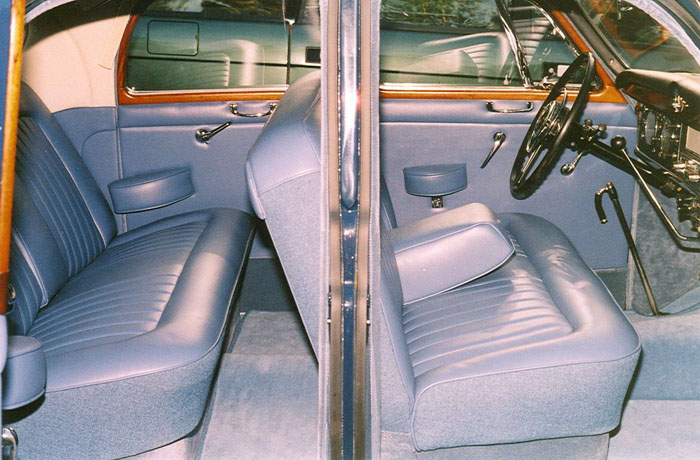  |
|
Please use your browser's "Back" button to |
|
|
